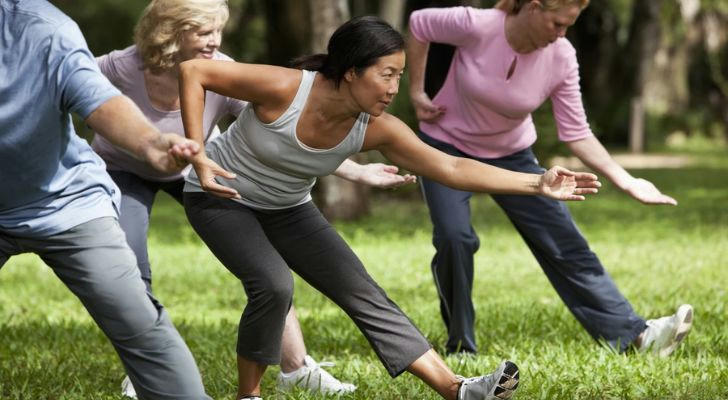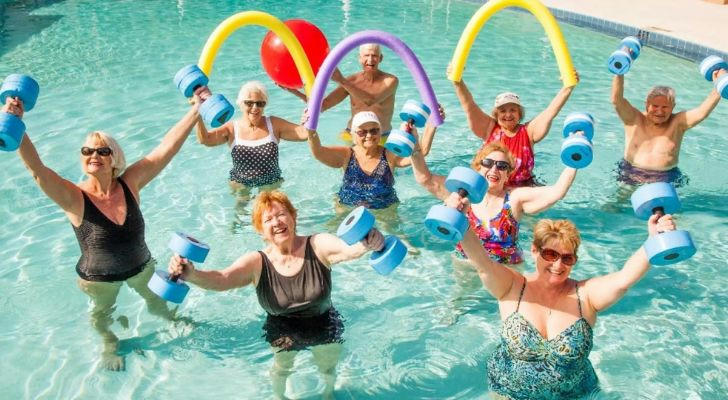How Elderly People Can Stay Young Through Exercise
As we age, maintaining a healthy and active lifestyle becomes increasingly important. Exercise is not just about physical health; it's also crucial for mental well-being and social connections. Let's explore how exercise can help elderly people stay young and vibrant.

1. Understanding the Importance of Exercise for the Elderly
Regular exercise is vital for the physical and mental health of the elderly, offering numerous benefits that enhance quality of life.
Exercise has been proven to prevent chronic diseases, improve mental health, and maintain independence in older adults. For instance, regular physical activity can reduce the risk of heart disease and diabetes by improving immune function and overall health.
Reduced Chronic Disease Risk: Studies show that exercise can lower the risk of chronic diseases like heart disease and hypertension.
Improved Mental Health: Exercise produces endorphins, which act as stress relievers and improve mood.
2. Types of Exercise Suitable for the Elderly
Various exercises are suitable for the elderly, each with unique benefits.
Tai Chi, health dance, walking, and other low-impact exercises are ideal for older adults. These activities improve balance, flexibility, and cardiovascular health while being gentle on the joints.
Tai Chi: Enhances balance, strength, and flexibility, reducing fall risks.
Health Dance: Promotes mental health and social interaction.
Walking: Improves cardiovascular health and weight management.
3. Tai Chi: Health Secrets for the Elderly
Tai Chi offers numerous health benefits for the elderly, including improved balance and cardiovascular health.
Tai Chi is a low-impact exercise that improves balance, strength, and flexibility, significantly reducing the risk of falls. It also enhances mental clarity and reduces stress, making it an excellent choice for maintaining overall well-being.

Example:
- Cardiovascular Health: Tai Chi can improve cardiovascular health by reducing blood pressure and enhancing circulation.
4. Healthy Dance: A New Fashion for the Elderly
Health dance is a fun and engaging way for the elderly to improve both physical and mental health.
Health dance not only improves physical health but also provides an opportunity for social interaction, which is crucial for mental well-being. By joining dance groups, elderly people can make new friends and feel more connected to their community.
Success Story:
- Social Skills Improvement: Dancing can help elderly people improve their social skills and reduce feelings of loneliness.
5. Walking Fitness: The Best Choice for the Elderly
Walking is a simple yet effective exercise for maintaining cardiovascular health and managing weight.
Walking is accessible and easy to incorporate into daily life. It improves cardiovascular health, aids in weight management, and reduces the risk of chronic diseases like diabetes and heart disease.
Practical Suggestion:
- Daily Walking Routine: Aim for at least 30 minutes of brisk walking per day to see significant health benefits.
6. How to Start an Exercise Program for the Elderly
Starting an exercise program requires setting realistic goals and developing a tailored plan.
To begin, it's essential to set clear exercise goals and consult with healthcare professionals to ensure the chosen activities are safe and suitable.
Implementation Steps:
Consult a Doctor: Discuss your health and fitness goals with a healthcare provider.
Start Slowly: Begin with low-intensity exercises and gradually increase intensity.
7. Safety Precautions for Elderly People When Exercising
Safety is paramount when exercising, especially for the elderly, to prevent injuries.
Elderly individuals should avoid overexertion and ensure they have proper support when needed. Wearing comfortable clothing and using assistive devices like walkers can help prevent falls.
Safety Guide:
Warm Up and Cool Down: Always warm up before exercising and cool down afterwards to prevent muscle strain.
Use Supportive Devices: Use walkers or canes if necessary to maintain balance.
8. Combining Exercise and Social Interaction for Elderly People
Exercise can be a powerful tool for social interaction, helping reduce loneliness and isolation.
Joining group fitness classes or walking groups provides opportunities to meet new people and build friendships, enhancing mental health and overall well-being.
Success Story:
- Building Friendships: Many elderly people have found new friends through exercise groups, improving their social connections.
9. Mental Benefits of Exercise for Elderly People
Exercise has profound mental health benefits for the elderly, including stress reduction and improved mood.
Regular physical activity can reduce symptoms of anxiety and depression by releasing endorphins, which act as natural mood elevators.
Exercise can enhance self-esteem by achieving physical goals and improving overall health.

10. Trends and Challenges of Exercise for Elderly People in the Future
The future of exercise for the elderly will be shaped by technological advancements and demographic changes.
Technological innovations, such as virtual fitness classes and wearable devices, are making exercise more accessible and personalized. However, challenges like population aging require innovative solutions to meet the increasing demand for age-friendly exercise programs.
Implementation Steps:
Stay Informed: Keep up-to-date with the latest trends and innovations in exercise technology.
Adapt to Changes: Be prepared to adjust your exercise routine as new technologies emerge.
Conclusion
Exercise is a powerful tool for maintaining health and vitality in older age. By incorporating activities like Tai Chi, health dance, and walking into daily life, elderly people can improve their physical and mental well-being, enhance social connections, and stay young at heart.
